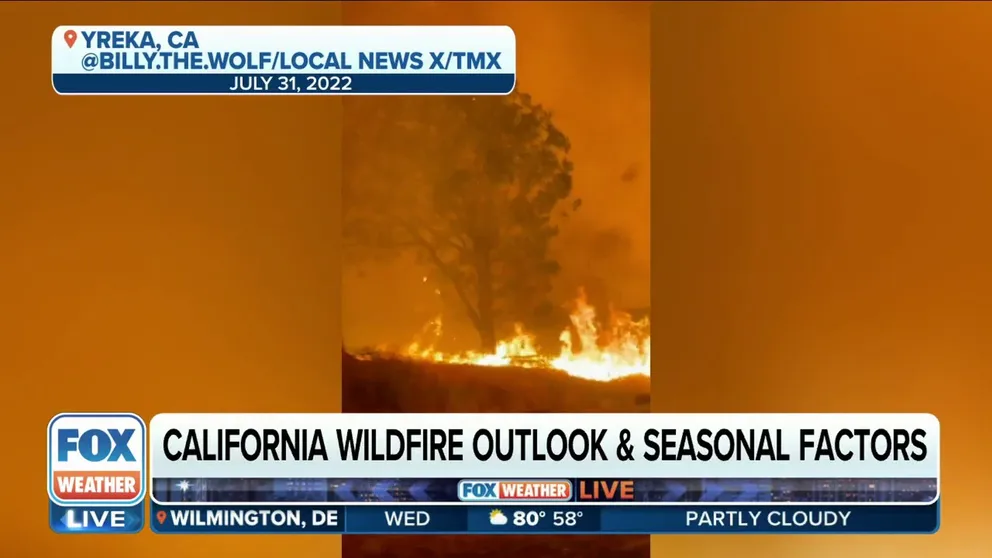State Farm stops offering home, property insurance in California amid skyrocketing disaster risks
"Rapidly growing catastrophe exposure," including wildfires, earthquakes and landslides, forced State Farm to stop offering home and property insurance in California, further shrinking the availability for homeowners to protect their homes.
California wildfire season could be one for the books after record winter rain
The time to protect your home from wildfires is now, Lenya Quinn-Davidson, Director of the University of California ANR Fire Network told FOX Weather. She has tips to keep your home safe and tells us what kind of fire season we can expect after record rain and snowfall over the winter.
Californians have one less option when buying business and home property and casualty insurance. State Farm announced the company will stop writing new policies in the Golden State.
"State Farm General Insurance Company made this decision due to historic increases in construction costs outpacing inflation, rapidly growing catastrophe exposure, and a challenging reinsurance market," said the company in a statement.
Homeowners scramble ahead of wildfire season
The announcement comes just ahead of what some experts fear could be an intense and active wildfire season. Historic winter rains and snow may, in turn, grow a historic amount of fuel for fires.
RIDICULOUS PHOTOS SHOW AFTERMATH OF 12 FEET OF SNOW IN CALIFORNIA'S SIERRA NEVADA
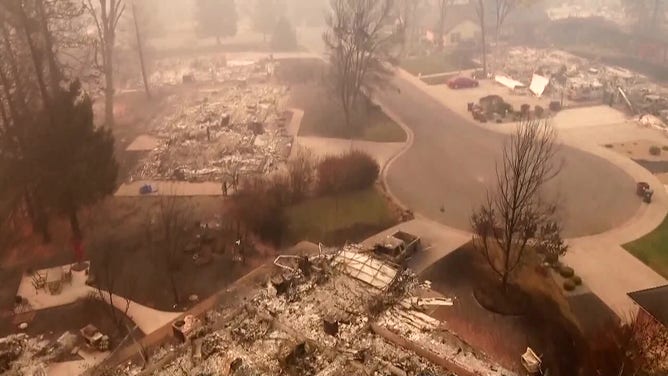
File: Drone footage shows whole neighborhoods burnt to the ground by wildfires in 2018.
(FOX Weather)
CLIMATE CHANGE ROCKING THE INSURANCE INDUSTRY AND HOMEOWNERS FEEL THE HEAT
"We're seeing a lot more grass growth; a lot more shrubs and just a lot of brush growing in California and that all dries out and ends up being fuel for fire," Lenya Quinn-Davidson, Fire Advisor with the University of California Cooperative Extension, told FOX Weather Tuesday. "So in some of those lower elevation areas, this increased moisture can actually increase the likelihood of fire spread."
State Farm only one of many insurers not writing in wildfire areas
State Farm is not the only insurer pulling out of the state. Ashley Viso, Area Vice President of Gallagher Insurance said the decision didn’t surprise her. She said Nationwide is not writing new commercial accounts and trying to get off all accounts in California, according to underwriters she works with.
And for years, homeowners in fire-prone zip codes have been dropped by insurer after insurer. State Farm is the biggest homeowner insurer in the state while Nationwide is the 10th largest, according to the Insurance Information Institute.
NEW CALIFORNIA INSURANCE RULES REWARD WILDFIRE MITIGATION
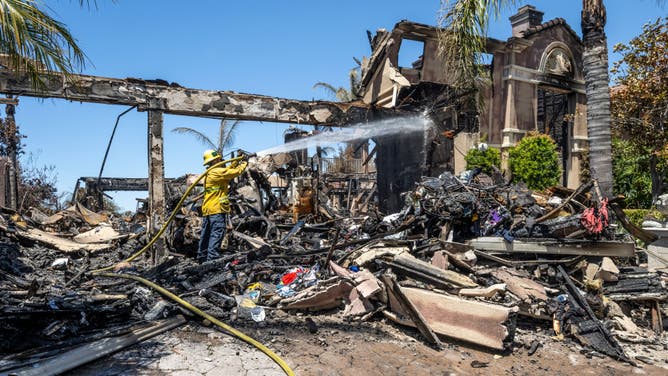
File: This is just one of the 20 homes burned in one the Laguna Niguel neighborhood of southern California in 2022.
(Paul Bersebach/MediaNews Group/Orange County Register / Getty Images)
California tops in costliest wildfire disasters
"I think a lot of it is California. The insurance commissioner has basically said they can't exclude wildfires on policies like they can earthquake or flood," Viso said. "And so a lot of insurance companies are choosing not to write in certain areas because they can't exclude the wildfire, because the state commissioner won't allow it, which is kind of crazy."
She said previous destructive fires and inflation are large parts of the equation too. California firestorms top NOAA’s list of the costliest wildfire disasters with $28.8 billion in 2018 and $22.1 billion in 2017.
"They just paid so many claims over the years that it's financially not it's not paying out for them," Viso said. "And then the construction costs in California are just through the roof. And so I think between all those, that's playing into companies not writing or getting off of policies."
2021 RANKED SECOND FOR HIGHEST NUMBER OF BILLION-DOLLAR DISASTERS ON RECORD
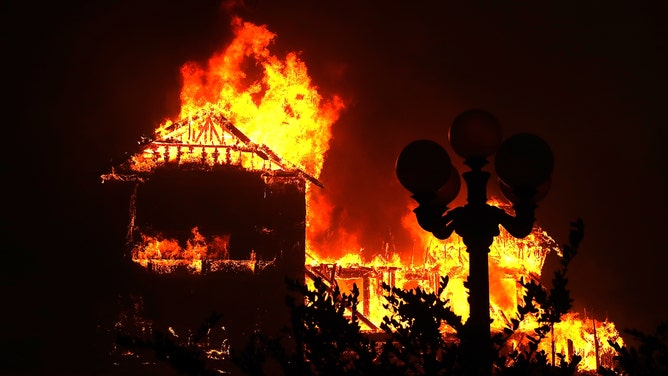
File: A home burns in the 2018 Camp Fire. In 2018 alone 7,948 wildfires scorched almost 2 million acres in California. Fire destroyed almost 25,000 structures and claimed 100 lives.
(Justin Sullivan / Getty Images)
Insurance rates go up after natural disasters
California is not alone, several states witnessed similar withdrawal of insurers after natural disasters.
"The property insurance markets in Florida, which was hit by hurricanes in 2017, 2018, and 2022, and Louisiana, site of multiple hurricanes in 2020 and 2021, have had affordability and availability issues, as well," said Michael Berry, Chief Communications Officer for the Insurance Information Institute. "The legal environment in those two states have put further cost pressures on insurers in Florida and Louisiana."
TOP 5 COSTLIEST HURRICANES IN US HISTORY
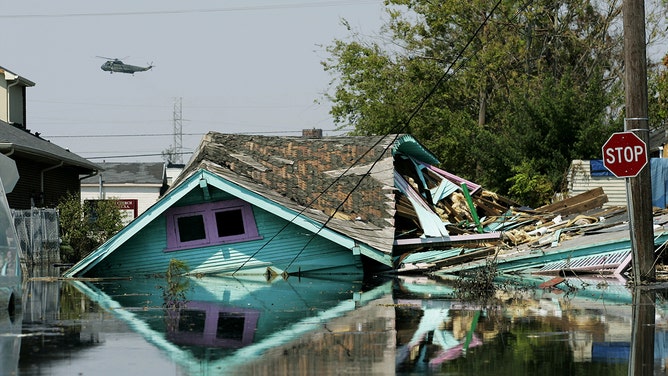
File: Military helicopter buzzes over the splintered remains of a house in the flooded Ninth Ward neighborhood of New Orleans in a search for survivors of Hurricane Katrina.
(Corey Sipkin/NY Daily News Archive / Getty Images)
WHY YOU SHOULDN'T BE ON AUTO-PILOT WHEN IT COMES TO YOUR INSURANCE THIS HURRICANE SEASON
‘Last resort’ insurance
The justification doesn’t make it any easier for those residents in many fire-prone zip codes to scramble to find affordable choices. Viso herself was forced to take what the Insurance Information Institute calls the state’s "property insurer of last resort," the FAIR Plan, Fair Access to Insurance Requirements Plan.
"We have a family house, and we had to go to the FAIR Plan about two years ago, and we went from about $5,000 to about $26,000 in premiums," explained Viso. "It financially doesn't make sense for a lot of people, so we had to strip it down big time. There aren’t many people that can afford $26,000 for fire and liability."
FAIR only covers smoke, fire and explosions, so she had to buy a separate liability policy. Her FAIR policy alone is now $13,000 a year, and she opted for a $1,000 liability policy. She’s forgoing any other homeowner's insurance protections to save $12,000 a year. Yet her current $14,000 premium is still about $10,000 more a year than her previous policy, and does not cover as much.
HOW WINTER'S ATMOSPHERIC RIVER STORMS COULD SUPERCHARGE CALIFORNIA'S WILDFIRE SEASON
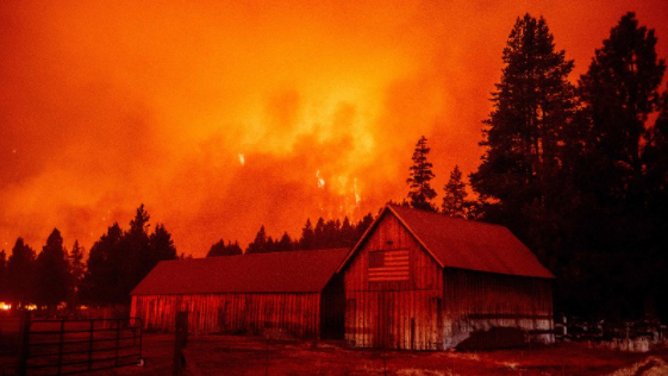
File: The Caldor Fire
(JOSH EDELSON / AFP / Getty Images)
"It’s better than nothing," she said. "We don't have all the bells and whistles for it, so we're self-insuring everything else."
State Farm said that their decision to stop selling new policies in California would not impact current policies or auto insurance.
